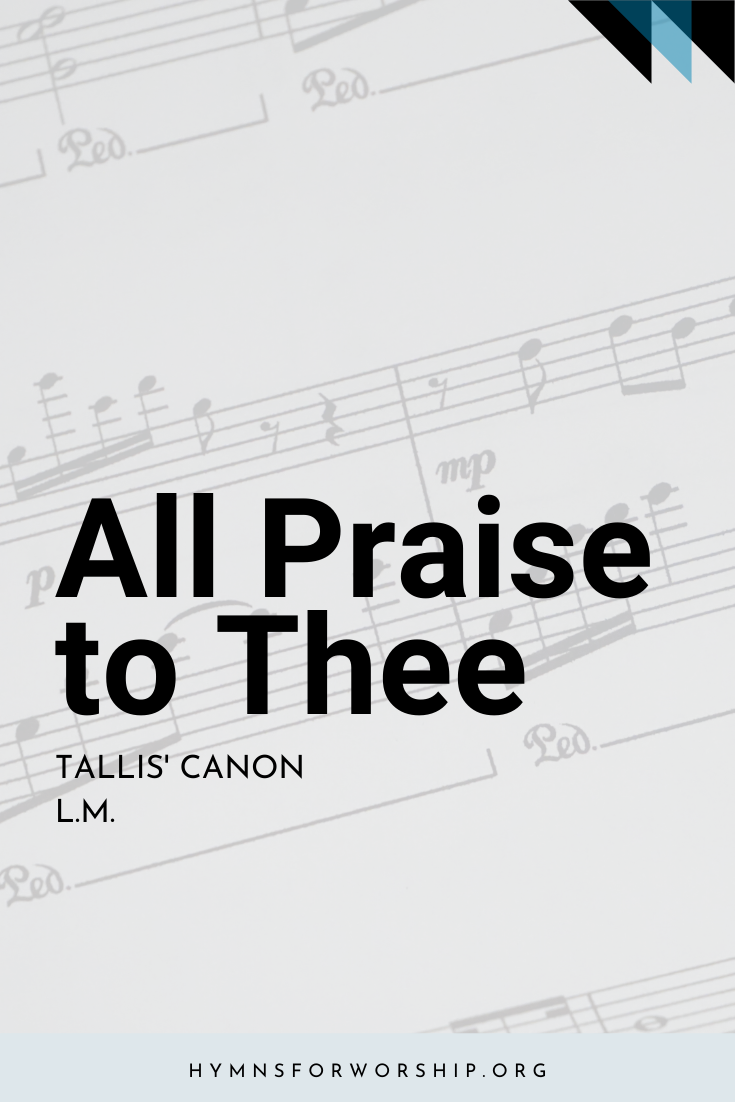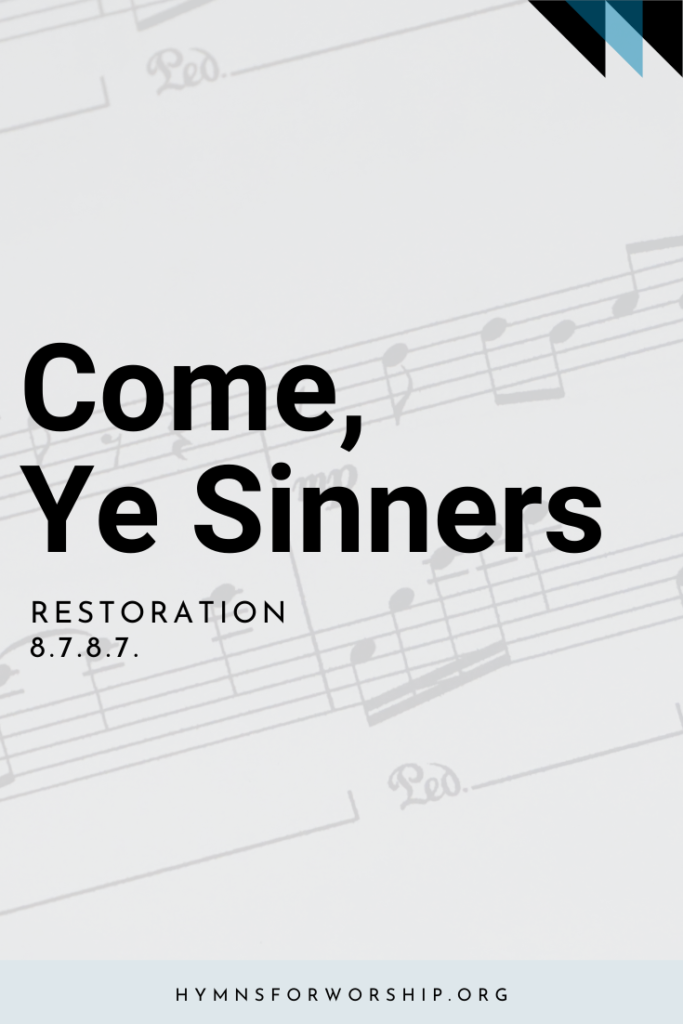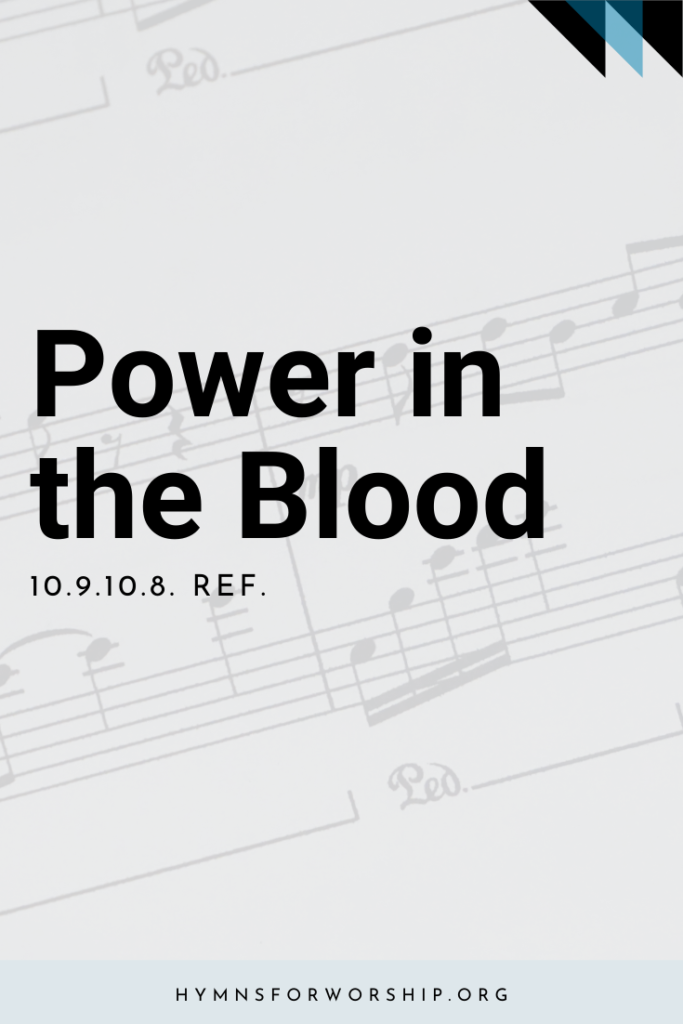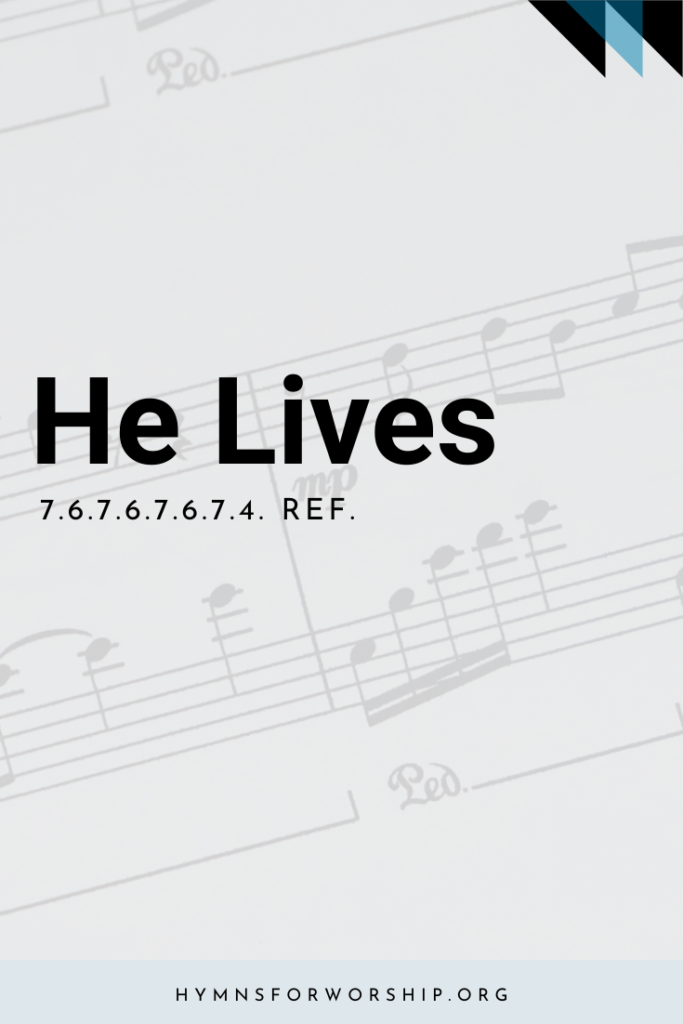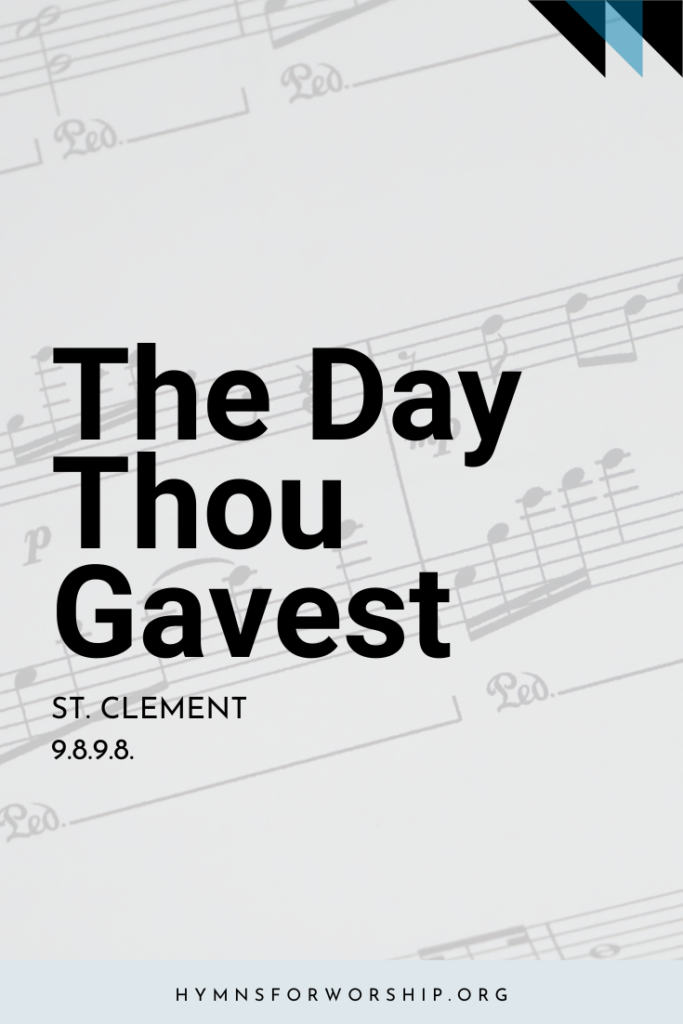WORSHIP >> EVENING WORSHIP
SDAH 53
All praise to thee, my God, this night,
for all the blessings of the light!
Keep me, O keep me, King of kings,
beneath thine own almighty wings.
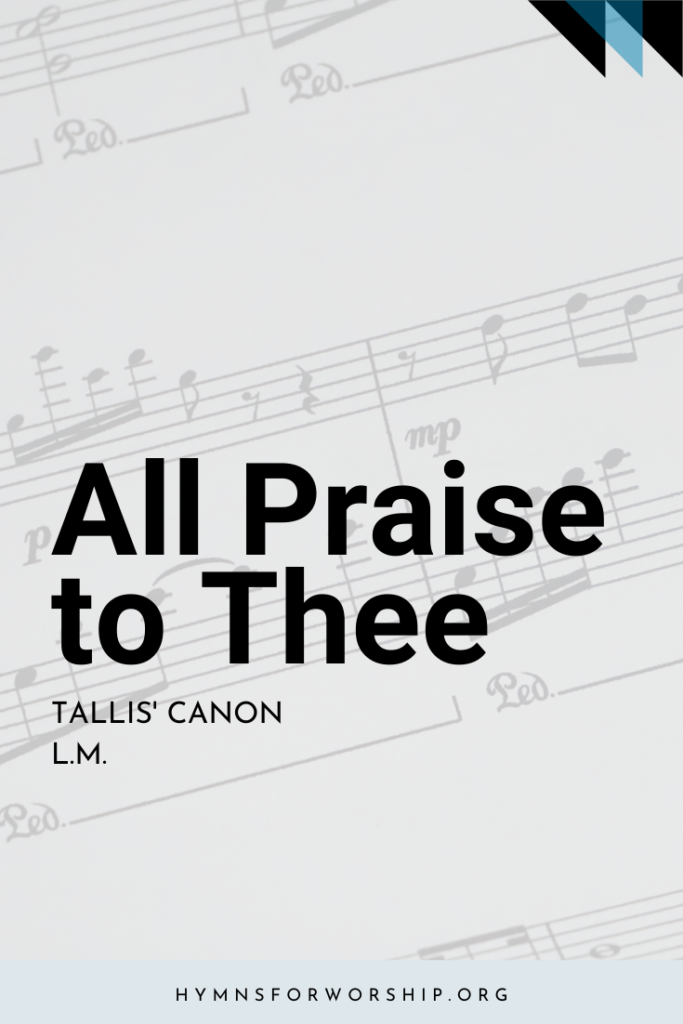

Text
1
All praise to thee, my God, this night,
for all the blessings of the light!
Keep me, O keep me, King of kings,
beneath thine own almighty wings.
2
Forgive me, Lord, for thy dear Son,
the ill that I this day have done,
that with the world, myself, and thee,
I, ere I sleep, at peace may be.
3
O may my soul on thee repose,
and with sweet sleep mine eyelids close,
sleep that may me more vigorous make
to serve my God when I awake.
4
Praise God, from whom all blessings flow;
praise him, all creatures here below;
praise him above, ye heavenly host;
praise Father, Son, and Holy Ghost.

Hymn Info
Biblical Reference
(a) Ps 53:1 (b) Matt 6:12 (c) Prov 3:24 (d) Ps 148:1, 2
Author
Thomas Ken (1637-1711)
Year Published
1674
Hymn Tune
TALLIS’ CANON
Metrical Number
L.M.
Composer
Thomas Tallis (c. 1505-1585)
Year Composed
c. 1567
Theme
EVENING WORHIP
Hymn Score
Piano Accompaniment
Notes
Get to know the hymns a little deeper with the SDA Hymnal Companion. Use our song leader’s notes to engage your congregation in singing with understanding. Even better, involve kids in learning this hymn with our homeschooling materials.
In 1674 Thomas Ken, then prebendary of Winchester Cathedral, published A Manual of Prayers for the Use of the Scholars of Winchester College, in which he advised the scholars to “be sure to sing the morning and evening hymn in your chamber devoutly, remembering that the psalmist, upon happy experience, assures you that it is a good thing to tell of the loving-kindness of the Lord early in the morning and of His truth in the night season.” The hymns had been printed unauthorized in 1692 and in 1693, so Ken published his “three hymns for morning, evening, and midnight” in 1694 and added them to his 1695 edition of A Manual of Prayers. They were somewhat revised for the 1709 edition, from which the SDAH hymn is taken. Out of an original 12 stanzas, SDAH utilizes numbers 1, 2, 4, and 12.
Thomas Ken was born at Berkhamsted, Hertfordshire, in 1637. When he was 9 years old, he was orphaned and went to live with his brother-in-law Izaak Walton. In 1651 he was a scholar at Winchester school, from which he went up to Oxford, gaining his B.A. in 1661. He was ordained in 1662 and in 1663 was appointed rector of Little Easton, a village in Essex, less that four miles east of the future site of London’s Stansted Airport. In 1667 he was appointed rector of Brightstone in the Isle of Wight, and two years later prebendary of Winchester Cathedral. In 1679 he was appointed chaplain to Princess Mary, then living at The Hague, but was dismissed after a year for speaking out against immorality in the courts of Holland and England and against King Charles II. In 1685 he was appointed by Charles II as bishop of Bath and Wells. Uncompromising in principle, in 1688 he refused to read the Declaration of Indulgence and was imprisoned by James II. He was deprived of his bishopric, and when invited to accept it after the death of his successor, he refused. He was noted as being bold yet gentle, pious, and kind. Ken died at a friend’s estate at Longleat, Wiltshire, on March 19, 1711. SDAH 694 and 695 are also by Thomas Ken and actually are the last stanza of this present hymn.
The tune TALLIS’ CANON was chosen by Ken for each of his three hymns and appears in a psalter issued between 1561 and 1567 by Matthew Parker, archbishop of Canterbury. It was composed by Thomas Tallis (c. 1505-1585), who was born, it is thought, in Leicestershire. By 1532 Tallis is mentioned as being an organist at Dover Priory and then in 1537, at Waltham Abbey in Essex. He was a chorister at Canterbury Cathedral and later became a gentleman of the Chapel Royal, then situated at Greenwich. He was able to serve royalty of both the Protestant and Catholic persuasions and was successively royal organist to Henry VIII, Edward VI, Mary, and Elizabeth of the house of Tudor. Tallis was given a monopoly on printing music and music paper by Queen Elizabeth. Known as the father of English cathedral music, he composed choral music, masses, motets, anthems, and hymn tunes. He died at Greenwich in Ken on November 23, 1585.
A canon is a piece of music which after a few beats one part repeats a preceding part exactly. In this particular tune the tenor part copies the soprano part exactly, except it is four beats behind. In other words, if the tenor part is played separately, it will appear to sound unfinished to one who knows the tune, or soprano part, but if the first four notes are added, it will be recognized as the complete tune. Alto and bass parts are added later to complete the harmony.

